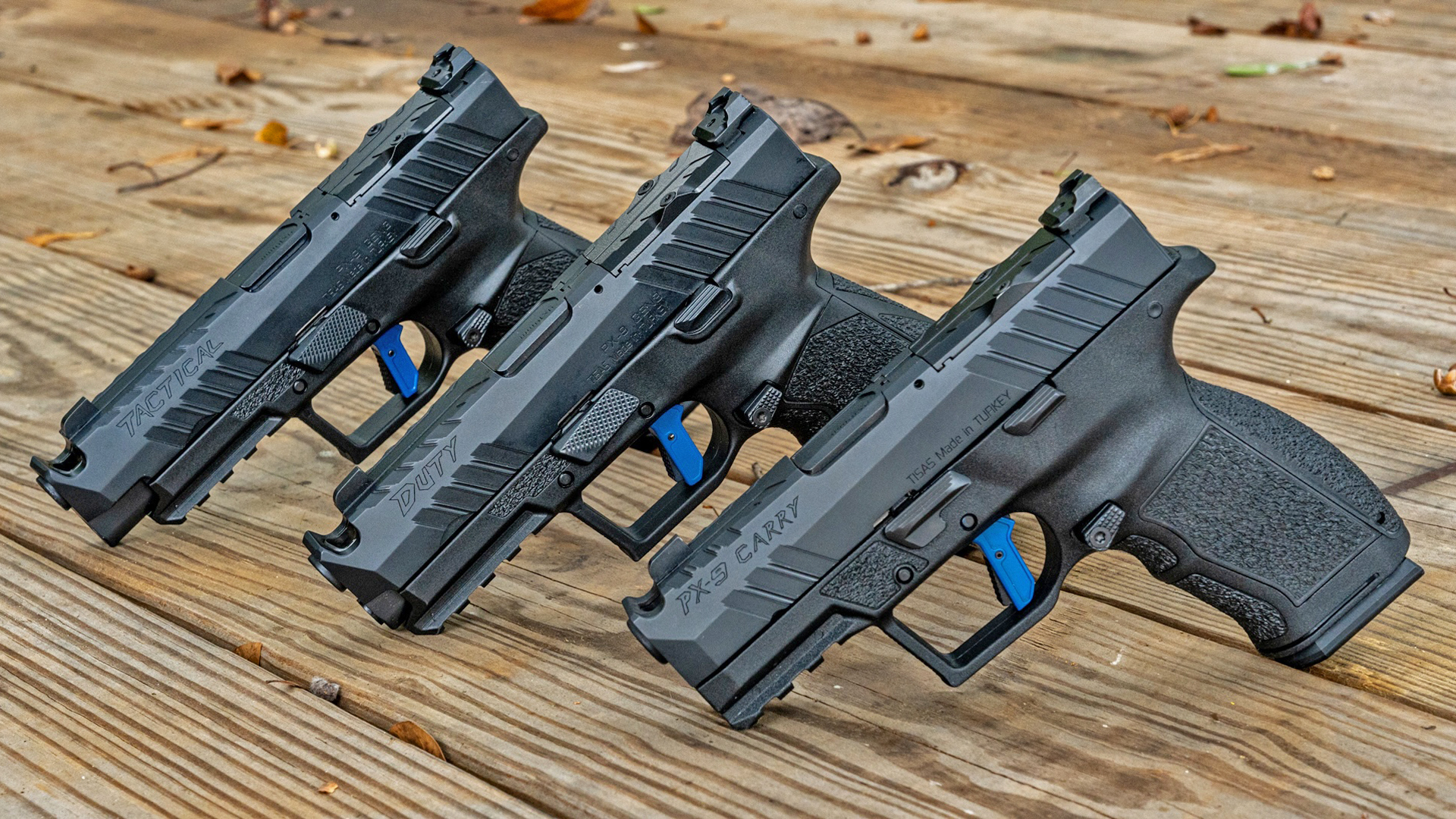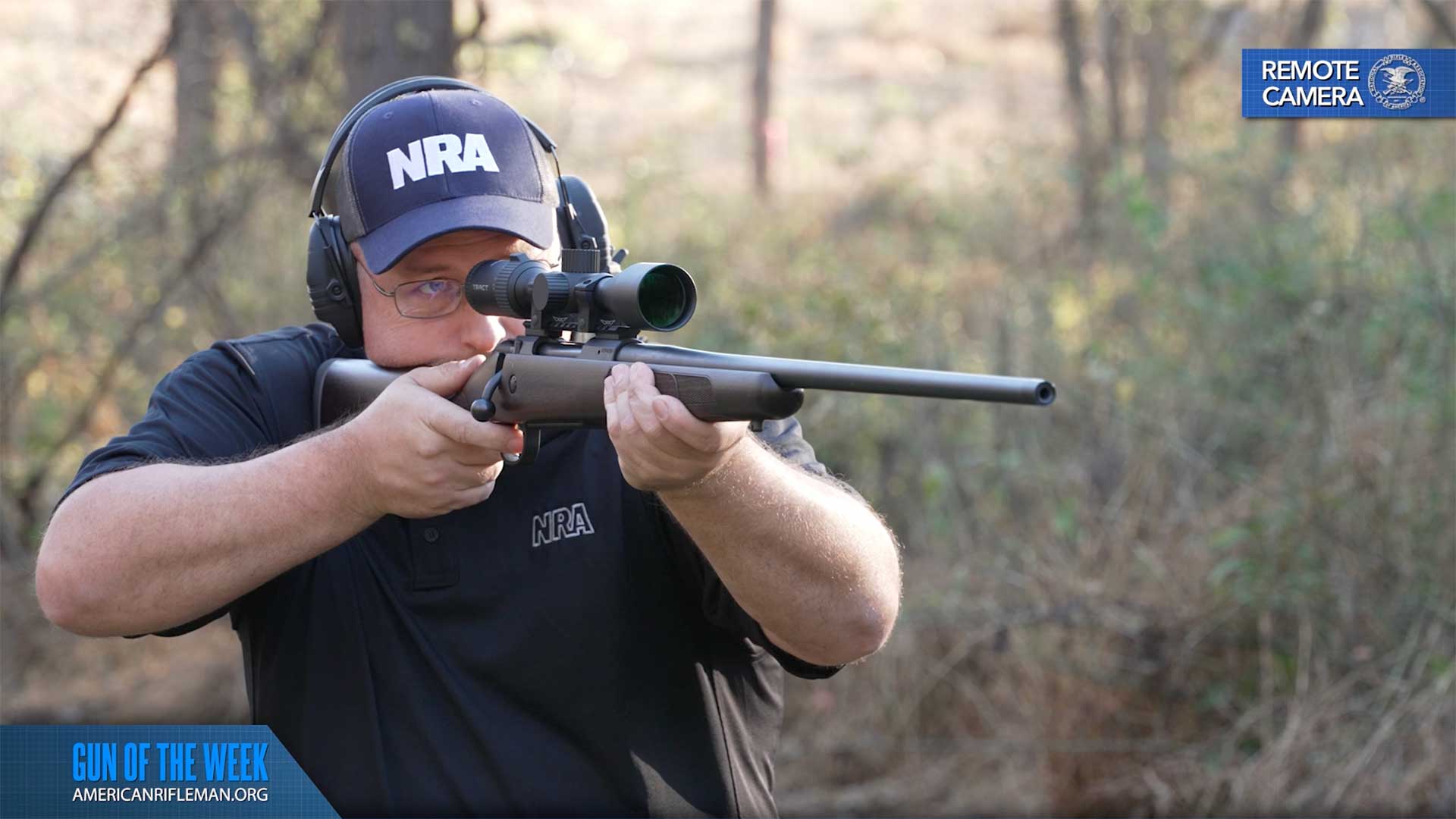
The notion of a magnifying optical sight goes back centuries. Experiments as early as the 18th century attempted to mount a telescope on a rifle as a sighting aid. These first attempts did more to identify the challenges and problems involved with telescopic sights than they did in producing a workable prototype.
In the 1830s, a civil engineer named John Chapman and another man, Morgan James, developed the first operational—if not practical—telescopic sight. Later, around 1855, a William Malcolm of Syracuse, N.Y., produced a telescopic sight featuring achromatic lenses like those used in telescopes and an improved design for windage and elevation adjustments. Quite a few of these sights saw service during the War Between the States on both sides.
Malcolm Scope
Development and refinement of telescopic sights—what we now call scopes—continued throughout the remainder of the 19th and 20th centuries. Most early scopes were long—sometimes as long as the barrel—and they were generally fragile. Windage and elevation adjustments were external, meaning the scope mount usually contained opposing mounting points held in place by screws. By turning the opposing screws a shooter could adjust the point of impact, and once he got the rifle shooting to point of aim, he could lock the screws against the opposing ones to maintain the sight alignment. While this arrangement could be very accurate, it greatly lacked robustness and repeatability.
The J. Stevens Arms and Tool Co. brought out a scope for rifles in the late 1800s. It was designed primarily for Schützen target shooting, was about 24 inches long and featured external adjustments. It was discontinued around 1916, and Stevens later sold its interests in optical sights to Lyman. Winchester also toyed with the scope market during the earliest part of the 20th century, but it too sold its interest to Lyman. J.W. Fecker began making scopes in the 1920s. These scopes became rather popular with the USMC rifle team atop 1903 Springfields. They also featured external adjustments, as well as a spring around the tube mating one end against a stop collar and the other against one of the mounting rings. This was supposed to allow the scope to move during recoil and re-index properly for the next shot.
As long as scopes required an external adjustment system, they would never be popular with the rough-and-tumble hunters of America. The system was just too fragile to reliably maintain zero on a rifle dragged through the northeastern alders or jostling around in the saddle scabbard of some western hunter. Then came along a German watchmaker to San Francisco, Calif., after the Great War. Rudolph Noske said that he got into riflescope making because he was tired of women giving him a hard time with their demands regarding his watchmaking work. He was looking for a product that only men were interested in, so he took up riflescope making.
Noske had some training in optics, along with serving an Old World apprenticeship in watchmaking before the war. He first developed a side mount that was rock solid, allowed for some windage adjustment and was relatively unobtrusive. While a good system, it wasn’t setting the shooting world afire. The problem that remained was those external adjustments and their fragility.
While he still toiled at making external mounts—along with some watchmaking to keep beans on the table—his scopes and mounts were purchased by few riflemen. Capt. Grosvenor Wotkyns played with Noske’s setup and put forth the notion to Noske that windage and elevation adjustments might be better if installed within the tube of the riflescope. By 1929 he had a scope with internal adjustments and long enough eye relief to keep the shooter from cold-cocking himself each time he shot a powerful rifle.
Then in 1930, Bill Weaver offered up his 330 riflescope, complete with a mount for about $19. Noske’s hand-built scope was the better part of 50 bucks, and you had to buy a mount on top of that. This was the beginning of The Depression, and while discretionary cash was mighty scarce, the notion of having a robust scope on one’s hunting rifle for less than 20 bucks was almost irresistible.
One problem that plagued virtually all scopes of that time was fogging. The problem was twofold; first it was nearly impossible at that time to hermetically seal the internal part of the scope from the surrounding atmosphere. This meant that moisture contained in that environment could seep into the scope, and if the shooter kept the rifle and scope inside where it was warm and then took it out to use, he usually found that his scope was nothing but a grey fog. Second, while it was known that dry air should be inside the scope to prevent fogging, the lack of ability to seal it from the outside world rendered it nearly useless. Part of this was teaching owners to not open up their scopes to clean or observe them. A lot of naïve guys made the fogging problem worse by taking their scopes apart or by accidentally removing the ocular lens while attempting to focus the scope.
Zeiss began fooling around with the notion of a variable power riflescope as early as the late 1920s, but it wouldn’t be until the 1930s when it tried to market such a scope. It did not sell well in the U.S., partly because of the Depression and partly because it was not repetitive in its zero from one power to another, and it was plagued with the common scope issue of fogging, especially in humid environments. The introduction of the variable scope also brought into question whether to mount the reticle in the first or second focal plane. Up to this time most scopes had the reticle in the first focal plane.
What is a focal plane? A focal plane is a plane perpendicular to the axis of a lens. Variable scopes have two focal planes for the purposes of this discussion; one in front of the lenses that control magnification, and a second plane at the rear of the erector tube which is behind the magnification lens group.
If the reticle is placed at the first focal plane (FFP), it is subject to the magnification changes because the magnification lenses are behind it. Reticles placed in the second focal plane (SFP) are behind the magnifying lens group and are not magnified as it is changed. An FFP reticle will appear to grow as the magnification adjustment is increased. In reality, this means that the reticle maintains its size relationship with the target throughout its adjustment span. Because of this, range estimation utilizing the reticle as a standard is possible because of the consistent ratio of reticle and target. There are two downsides to FFP scopes: First, the reticle may appear too small at lower power settings. On the other hand, the magnified reticle can obscure portions of the target at higher magnifications.
Scopes with the reticle in the SFP do not magnify the reticle as the power is adjusted. Most American hunting scopes are SFP. While this may not obscure some parts of the target, there are a couple of problems. The first is that the holdover for longer shots is only accurate at one power setting, usually somewhere in the middle of the variable’s range because the relationship between the reticle and power settings differ, hence the relationship between the reticle and the target changes as well. Also—and not to get ahead of ourselves regarding reticles—those reticles that employ hash marks, MIL dots or MOA dots will not have a consistent ratio throughout the power range. SFP scopes are fine for most hunting applications where extreme accuracy at long range is not needed and minor variations as to zeroing within the power ranges are inconsequential. SFP scopes are also a bit less expensive.
Reticle images courtesy Leupold
The first variable of much consequence in the American market was the Weaver KV, introduced about 1952. In actuality it was more of a dual-power scope—2.5X or 5X. While it may have been a good first effort, the KV lacked a few things. In addition to just two power settings, the reticle was not centered in the scope and zeroes were not always repeatable. The KV came with its own scope rings, which were mounted to the scope before mounting it on the rifle. In 1956 Weaver brought forth the KV 3-5 60 model, which had a centered reticle and was nitrogen filled to prevent fogging.
Other manufacturers saw the handwriting on the wall and began developing variable power scopes as well, but it wasn’t until the mid-1960s that the variable scope really took off in popularity. A lack of consistent sealing against the atmosphere, and zeroes that were not always repeating, plagued variables for some time. The sealing issues were eventually addressed—except for the doofusses who insist on taking their scopes apart—and zero changes for precision and tactical shooters were taken care of by marketing more FFP scopes.






































